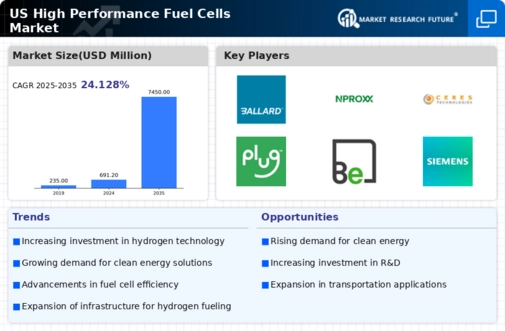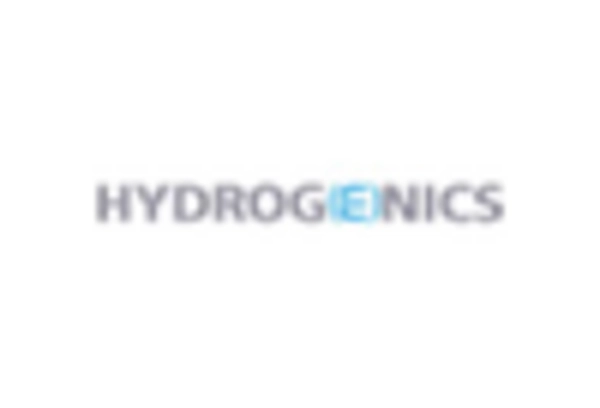Advancements in Fuel Cell Technology
Technological innovations in fuel cell systems are significantly influencing the high performance-fuel-cells market. Recent developments in materials science, such as the use of advanced catalysts and membranes, have enhanced the efficiency and durability of fuel cells. For instance, the introduction of proton exchange membrane fuel cells (PEMFCs) has improved performance metrics, making them suitable for a wider range of applications, including transportation and stationary power generation. The market is anticipated to grow as these advancements lead to lower production costs and increased reliability. By 2025, the market could see a valuation exceeding $10 billion, driven by these technological breakthroughs that enhance the appeal of high performance-fuel-cells.
Rising Demand for Clean Energy Solutions
The increasing emphasis on clean energy solutions is a pivotal driver for the high performance-fuel-cells market. As environmental concerns escalate, industries and consumers alike are seeking alternatives to fossil fuels. The U.S. government has set ambitious targets to reduce greenhouse gas emissions by 50-52% by 2030, which is likely to bolster the adoption of fuel cell technologies. In 2025, the market is projected to reach approximately $10 billion, reflecting a compound annual growth rate (CAGR) of around 15% from previous years. This shift towards sustainable energy sources is expected to create a robust demand for high performance-fuel-cells, as they offer a viable solution for reducing carbon footprints across various sectors.
Increasing Adoption in Transportation Sector
The transportation sector's shift towards electrification is a significant driver for the high performance-fuel-cells market. With the growing need for zero-emission vehicles, fuel cells are being recognized as a viable alternative to traditional battery electric vehicles. Major automotive manufacturers in the U.S. are investing heavily in fuel cell technology, with projections indicating that the market for fuel cell electric vehicles (FCEVs) could reach $7 billion by 2025. This trend is likely to accelerate as consumers demand cleaner transportation options, further propelling the high performance-fuel-cells market.
Growing Investment in Hydrogen Infrastructure
Investment in hydrogen infrastructure is emerging as a crucial driver for the high performance-fuel-cells market. The U.S. is witnessing a surge in funding for hydrogen production, storage, and distribution facilities, which is essential for the widespread adoption of fuel cell technologies. In 2025, the U.S. Department of Energy has allocated over $200 million to support hydrogen initiatives, indicating a strong commitment to developing a robust hydrogen economy. This investment is likely to facilitate the integration of high performance-fuel-cells into various sectors, including transportation and industrial applications, thereby expanding the market's reach and potential.
Regulatory Frameworks Promoting Clean Technologies
The establishment of regulatory frameworks aimed at promoting clean technologies is a vital driver for the high performance-fuel-cells market. The U.S. government has implemented various policies and regulations that incentivize the adoption of fuel cell technologies, including tax credits and grants for research and development. These initiatives are designed to encourage innovation and investment in clean energy solutions. As a result, the market is expected to experience substantial growth, with estimates suggesting a potential market size of over $10 billion by 2025, driven by favorable regulatory conditions that support the deployment of high performance-fuel-cells.

















Leave a Comment